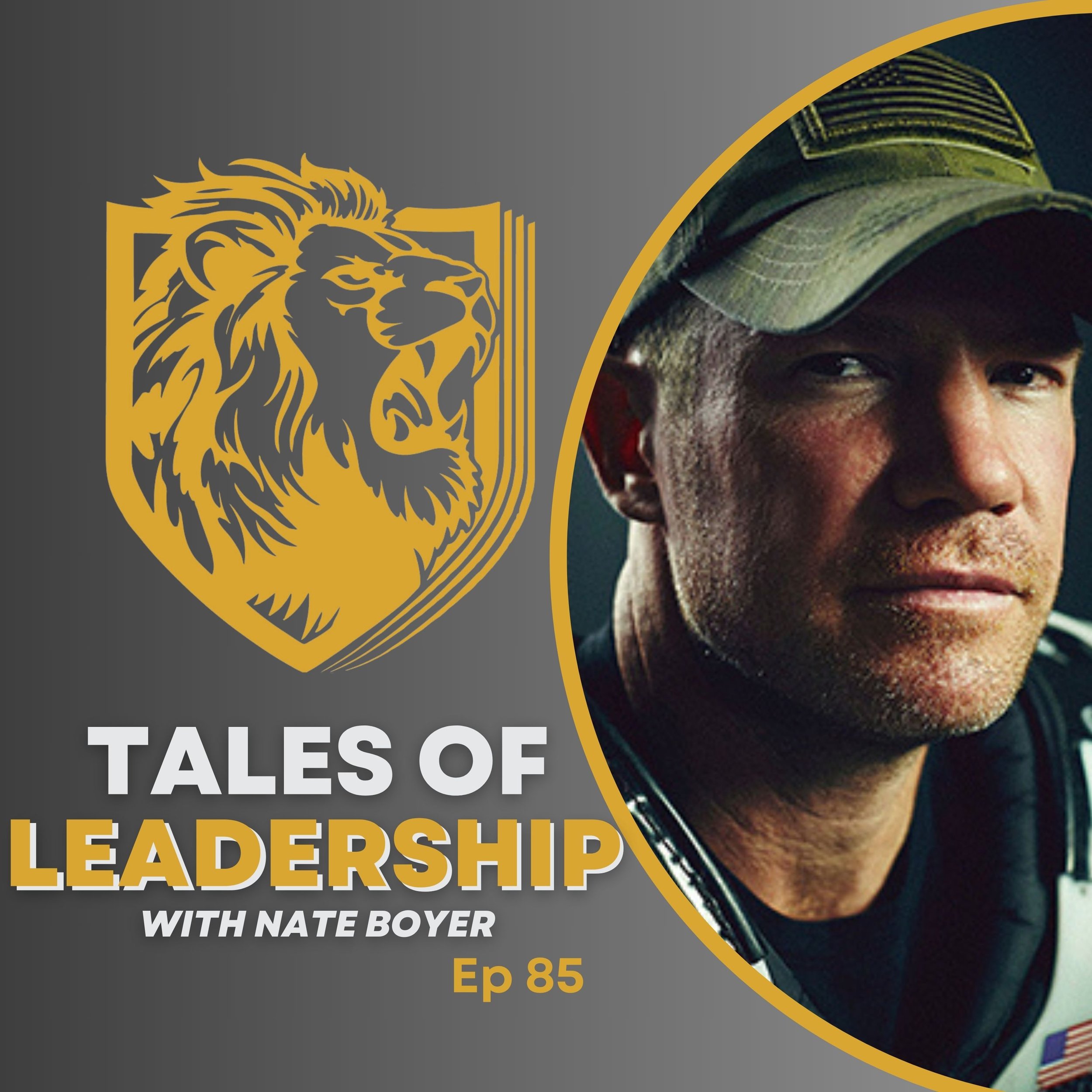Article 27: Vision
Vision is among the most overused words in the civilian and military world. Often, leaders create short-term concepts that only impact the organization when they are in leadership positions. However, a vision must outlive you and scare others due to its sheer scope. Take Bill Gates, for example. His vision is to place one PC on every desk in the world. That requires long-term commitment built on shared values. When leaders cast a vision for their future, they force collaboration and communication in their team and personal lives. To achieve the extraordinary, you must frame the challenges relative to your capacity. Too small of a vision leads to expected results; too bold, it becomes unrealistic, and you fail to develop the required resources. I've created a system called VISION to help you break through the mental fog and start building traction for your personal and professional life. Purposeful Accountable Leaders (PALs) inspire themselves and others by creating a realistic vision aligned with their heads and hearts.
A vision inspires, scares, and demands a response.
- Joshua K. McMillion
Validate Your Pillars
Regardless of your background or the current season in life, we all have important areas. Pillars are areas in your life that act as anchor points as you progress on the leadership journey. Your pillars must be broad enough to look into the future but specific enough to inspire others to action. The book Vivid Vision is a great resource I have used to discover my pillars. However, you must be the one to select the areas in your life in which you choose to grow intentionally. To inspire you, my pillars follow the keep it simple stupid (KISS) rule. They are family, faith, finance, field, fitness, fun, freedom, or the 7F's. These areas should have an emotional connection and help you grow into the leader you intentionally choose to become over the next ten years. They are anchor points, allowing you to gauge if you are on course. There is no perfect number of areas for your life. However, I highly recommend you limit yourself to no more than seven. You dilute your vision once you cross that threshold and allow a goal mindset to occur. Remember, it's not about creating goals and accomplishing them. The more profound point of casting a vision is identifying the person you choose to become. PALs are intentional with their chosen pillars and understand that goals are not the outcome but the process that achieves results.
Glasgow Cathedral
My wife and I recently visited the UK and had the honor of visiting the oldest cathedral in mainland Scotland. It is inspiring to see pillars that have stood for generations. I could think of no other picture more fitting to illustrate this point when developing a vision for your life.
Identify Where You Are
After selecting your pillars, identify where you are in those areas. Understanding where you are is essential in casting a vision for your future. The hardest part is selecting the pillars that serve as anchor points for your growth plan. Each area is not equal to the other, and that will impact the goals you set. I developed the Wheel Of Leadership tool that uses simple grading criteria to gauge your current scores. For example, apply these three questions that can be universal to each pillar, which applies a Likert grading scale. An example question would look like this: How would it feel if I failed to meet my 10-year goals in the area of family? I would then rate my response on a scale from one being the worst to 10 being no impact. By calling out your pillars with powerful questions, you begin to see the areas most important to you. Discovering your pillars are weighted differently is critical when setting goals. An area you're not emotionally drawn to should have reasonable goals. However, if you are developing a growth plan for the most critical area, your goals must inspire, scare and demand action. To illustrate this point, I provided the wheel of leadership below. PALs own their areas and create a growth plan matching their emotional connection.
Strength Statement
Part of casting a vision is creating alignment in your life, creating a burning desire to find ways to achieve your goals regardless of the obstacles. A strength statement is just that. It's a fuel source or energy depot for when times get tough. As my friend and vocal coach Liz Howard says, "Once you find the right note in life, anything is possible." A strength statement is your unique note only found by deep reflection. It serves as an affirmation in impossible times where moving forward is unimaginable. I've developed my strength statement by reflecting on my past experiences. What are some of your most memorable, tragic, or triumphant moments? How did you feel during that time frame? What pushed you to move forward? I discovered my mantra and life in Afghanistan. Every day is a gift, and I refuse to waste my moments on this earth. Eventually, I built my strength statement: every day is a gift; do not waste yours. What is yours? PALs develop a powerful strength statement that shines light in the darkest times.
Southern Afghanistan 2012
This was a picture of my platoon when I was honored to lead and serve with them in southern Afghanistan. The photo was taken on one of our last days in that country. My time as a platoon leader in Afghanistan was instrumental in becoming the leader I am today and helped me forge my strength statement.
Illustrate 10-5-1 Year Growth Plan
The fourth step to casting your vision is engaging your head, heart, and hand alignment. You see where you want to go and find intrinsic motivation. Now, get your hands into the fight and put pen to paper. I believe casting a vision is best by looking 10 years into the future. Why? Life is a consistent changing of seasons. Thinking too far forward defeats the purpose. I argue you can easily focus on the next 10 years of your life and create a plan to get there. Beyond that timeframe, mental fog takes over. The purpose of 10 years is to create a realistic growth plan that allows you to move forward.
Start at 10 and work back to five and finally one year. List the areas you've chosen to grow in and create 3 to 5 goals per pillar. I recommend not surpassing the five-goal mark because your attention will shift from a growth to a goal mindset. To ensure you create powerful growth plans, use the SMARTS framework, which is specific, measurable, achievable, realistic, time-based, and share it. Each goal must check the box, allowing your next five and one-year plans to become traceable goals to the leader you will become in 10 years. As you are developing your growth plan, ensure you are sharing it! If you're married or have a significant other, plan with them. I have learned that a vision is useless if your partner is not growing with you. At a minimum, they can be your accountability tree to hold you to your growth plan. PALs developed 10-5-1 year growth goals guiding them to become their best version.
Own Your Story
After you've developed your 10-5-1 growth plans, it's time to bring them to life. In system engineering, there is a term called use case. Use cases show how users will interact and use a system being developed. They help visualize how the system is intended to identify unseen areas. Each use case is tied to a requirement and traceable to the user. When casting your vision, the goal is to create use cases centered around your pillars. For example, how will you grow financially at the end of the 10 years? The use case must incorporate your goals, but more importantly, bring them to life. Each pillar must describe your future so vividly you can see, feel, and taste it. Creating a use case for your pillars allows you to develop intrinsic motivation. How will you feel in 10 years if you succeed? What will it mean to fill? When you complete your use case, you can start to see the leader you're growing into. PALs develop narratives for their future that inspire them to act.
I finally got to wear it, kilt!
I've always wanted to visit Scotland, and I finally got the opportunity to achieve one of my lifetime dreams. I would have never had this opportunity if I had not been focused on where I wanted to grow intentionally. When we have a plan, we can achieve extraordinary results, not just personally but professionally!
Navigate Your Battle Rhythm
The final step in casting a vision comes down to one word, consistency. Will you stay routine, accountable, and disciplined (RAD) in your journey? To stay the course, you have to develop a battle rhythm. Your battle rhythm must be traceable to your 10-year growth goals, and you must be given direction weekly. Start off by setting your daily top three targets. What three goals will you accomplish today, and why are they important. Second, develop a weekly battle plan of attack with no more than seven growth goals. Out of those seven, what is your one big thing? The one goal that, if achieved, is still a success. Having family appointments, birthdays, work events, or self-growth goals is OK. Each week is different because life gets a vote. Your goal is to develop a plan that intentionally forces forward momentum.
When we act without a plan, it only causes energy loss, and we end up in the same spot. Finally, I recommend developing a quarterly plan focusing only on significant life events. For example, family date nights, significant travel, or one-year targets. For instance, under my faith pillar, my one-year goal was to attend a marriage retreat. We recently planned out three months in advance and de-conflicting with life's competing goals. If you plan significant events in the present, you will find an excuse to not go through with them. Remember, if you're married or in a relationship, incorporate them into your battle rhythm, or it creates abstraction.
Final Thoughts
What makes highly successful people able to advance forward consistently. They understand the importance of casting a long-term vision. If you want to stay consistent, it's on you and no one else. Day-in and day-out action is required to close the distance and become the person you intentionally choose to become. The moment you give excuses a voice and stop planning your day, others will fill the void. Time is precious, and I place a high price on mine. Take your time and use the VISION framework to help cast a vision for your future. Set up a free coaching call to take your accountability to the next step. I will work with you to create a custom growth plan for the attack.
After Action Review
What would your areas in life be?
Where are you in those areas currently? Are you happy with the answer?
What would it mean to have a 10-year vision to work towards?
My Mission: I will end toxic leadership practices by equipping leaders with transformational leadership skills.
Together, we will impact 1 MILLION lives!!!
Every day is a gift, don't waste yours!
Joshua K. McMillion | Founder MLC | Founder MLC

































Episode 94 with Leanne Meyer